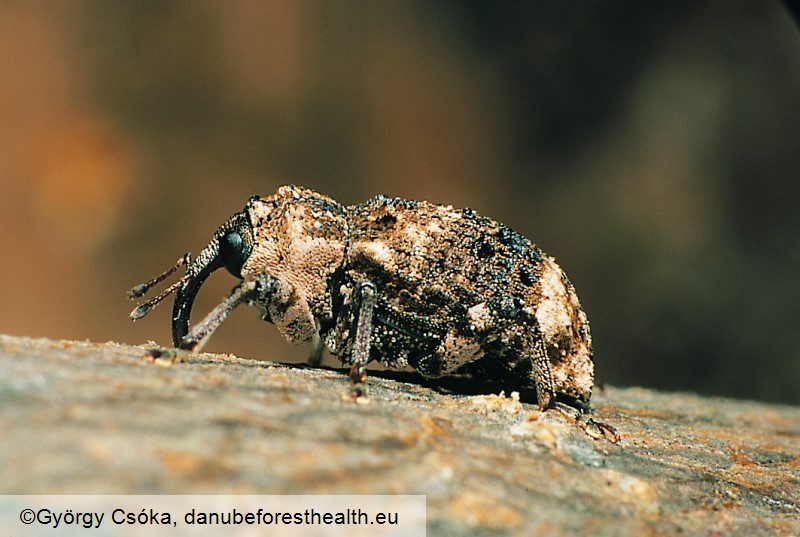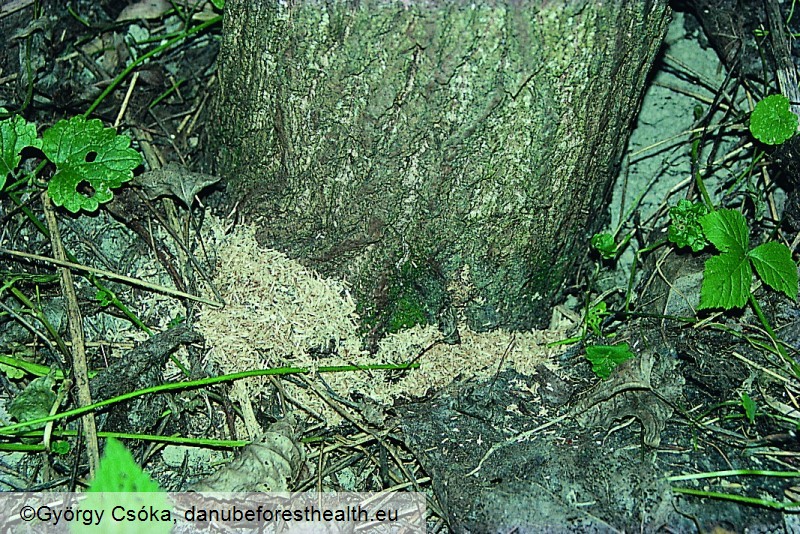Animalia
Poplar-and-willow borer
Cryptorhynchus lapathi
Maarten de Groot
|
|

Fig. 1. Adult of Cryptorhynchus lapathi

Fig. 2. Larva of Cryptorhynchus lapathi

Fig. 3. Frass at the base of the tree cause by feeding of larva of Cryptorhynchus lapathi

Fig. 4. Galleries of Cryptorhynchus lapathi
DETECTION PERIOD:
June-October (flight period)
DESCRIPTION:
Weevil with a medium length snout. The elytra are covered with tufts of dark and light hairs. The larvae are whitish, curved and legless. The larvae have five to six instars. Till the first three instars they are feeding in the cambium, after that in the sapwood. Therefore, a characteristic is the dark sawdust in the beginning and light sawdust later in the season laying beneath the attacked trees. Because the larvae is feeding in the core of the tree, twigs become thickened and deformed. The Exit holes have an elongated shape.
HABITAT:
Attack different deciduous tree species, but has a preference for willow (Salix spp.) It is also recorded on poplar (Populus sp.), birch (Betula sp.) and alder (Alnus sp.). It occurs in forest and urban areas.
STATUS:
Occurs in all countries in the refocus area (Austria, Croatia, Hungary, Serbia and Slovenia).
IMPACT:
It is an economical pest of poplars, and more secondary willows. It attacks especially ornamental plants and plants planted for windbreak. Also in plantations of poplars and willows it can cause serious damage.
SIMILAR SPECIES:
This species with its combination of colors and shape does not have similar species.
|